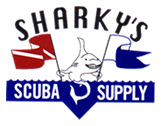Aluminum vs Steel
- Aluminum cylinders
- lighter than steel
- less expensive than steel
- can only be filled to standard pressures (eg 3000 psi)
- are positively buoyant when near empty
- if the diver is perfectly weighted at the start of a dive with a full aluminum cylinder he will be light at the end of his dive while completing a 10-15 foot safety stop
- therefore the diver should be either overweight at the start of the dive by 3-4 lbs or have a rope on which to hang at the safety stop
- Steel cylinders
- heavier than aluminum
- about 2-3x as expensive
- can be filled to standard pressure (eg 3000 psi) but can be rated to overpressure (eg 3660 psi) which allows the cylinder to hold more compressed gas
- are neutrally buoyant when empty
- the diver is less likely to have difficulty with depth control at the 10-15 foot safety stop
Measuring Pressure and Volume
Pressure
- several different units are used to describe pressure
- similar to meters vs yards: both measure distance but are not the same units
- atmospheric pressure at sea level is 1 atmosphere (1 ATM), and is the same as
- 1 bar (well, to be precise, 1.01325 bar)
- 760 mm Hg
- 14.7 pounds per square inch
- 1033.6 cm H2O
- North America uses psi
- Europe and Asia use bar
- 3000 psi = 200 bar (well, actually 204 but forget the 4) = 200 ATM
no one uses mm Hg or cm H2O except with medical gases
Volume
- liters or cubic feet
- 1 cubic foot (1 cf) = 28.316 L
Empty Tank Volumes & Pressurized Volumes
- if you were to take the top off a scuba cylinder, fill it with water then pour the water into a measuring device, you’d know the actual internal volume of the cylinder
- in North America, cylinders are described in terms of their full volume capacity (in cubic feet), not in terms of their actual empty volume capacity (in liters)
- you can calculate the empty volume of a tank by dividing the amunt of gas it holds by the pressure in the tank when filled to capacity, then converting that to one atmosphere pressure
- eg: 80 cf tank at 3000 psi holds 80 cf gas
- 80/3000 = 0.02666
- and at one atm (14.7 psi) 0.02666 x 14.7 = 0.392 cf
Tank Size (cf) Pressure (psi) Empty Vol (cf) Empty Vol (l) Full Vol (cf) Full Vol (l)
80 3000 0.392 11.10 80 2265
94 2700 0.512 14.49 94 2662
100 3440 0.427 12.09 100 2832
117 3440 0.500 14.16 117 3313
133 3440 0.568 16.09 133 3766
- as a point of interest, when we are at rest we breathe about 5-6 liters a minute
About the Author: Larry Schnurr is one of Sharky’s Instructors. As a physician whose specialty includes pulmonary medicine, he is particularly interested in gases as they relate to scuba diving.
